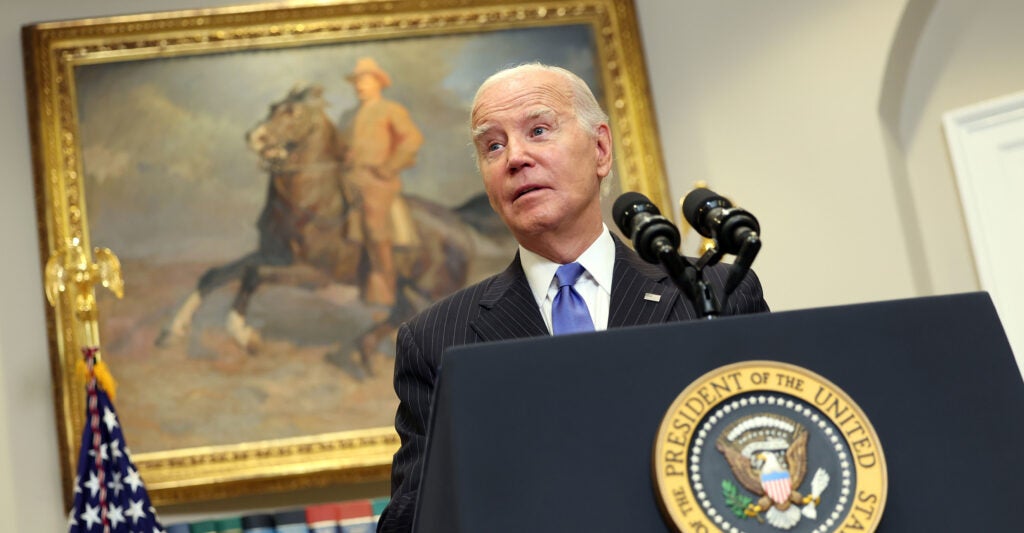Friday’s announcement from the Bureau of Labor Statistics that employers created 336,000 jobs in September is seen as a sign that the economy is powering forward. In addition, job-creation numbers for the prior two months were revised upward.
The New York Times called it “unexpected vigor.” President Joe Biden took credit and called it “Bidenomics.”
True, the numbers look good on the surface. Who doesn’t love job creation of 336,000 when economists were predicting only 136,000? But a look at the details tells another story—and shows how Biden continues to favor environmentalists over blue-collar workers, splitting the fragile Democratic Blue-Green coalition.
First, of the jobs created, 73,000 were in government and 70,000 were in health care and social assistance, a government-supported sector. About 40% of the jobs created rely on taxpayer dollars in some form.
Then, about 100,000 were in leisure and hospitality, a sector that pays lower than average. Some said that this was teenagers working their final jobs of the summer, but summer was over for teens by the end of August, and the teen unemployment rate declined by six-tenths of 1% as many left the labor force and returned to school.
What’s especially troubling was the jobs that were not created.
Employers hired only 17,000 workers in manufacturing. Oil prices were more than $90 per barrel in September, but only 200 jobs were created in oil and gas extraction. And America needs minerals for electric vehicles, but the mining sector lost 400 jobs, rather than gained them.
Those jobs numbers provide a rationale for the fracturing of Biden’s Blue-Green coalition that has been front and center with the UAW strike. The blue-collar workers want well-paying jobs, and the green environmentalists want to send energy-intensive jobs abroad.
Leisure and hospitality jobs—low-paying jobs in coffee shops, restaurants, hotels, and theme parks—can’t go abroad. Those represented one-third of the jobs created. But the jobs needed to power today’s economy—the oil to run factories and make gasoline, even minerals so that new battery and electric vehicle jobs can stay in America—were nonexistent.
America is energy independent due to vast resources of oil and natural gas that have been discovered and produced through innovative technology, but Biden is insisting on on leaving it in the ground and instead moving to electric vehicles, which rely on Chinese-owned minerals from Asia, Latin America, and Africa.
New proposed Environmental Protection Agency regulations would require electricity to be produced from renewable or clean sources, including solar and wind power. Seven of the 10 largest wind and solar companies are in China, and the requirements mean that America would be dependent on China for energy. Thirty-one states already have such requirements.
The EPA and the U.S. Department of Transportation are considering regulations that would require 60% of new vehicles sold to be electric by 2030, and two-thirds of them to be electric by 2032. Those regulations, if finalized as proposed, would require dependence on EVs whose batteries are now made in China.
The shrinkage in mining employment shows that America is not expanding domestic production of minerals needed for batteries needed for EVs, wind turbines, and solar panels.
With the price of gas almost $4 a gallon in September, it’s troubling that Biden is not expanding oil and gas development to reduce prices.
If you think the September job numbers are good, think what they would be like if the administration were to allow the domestic energy sector to produce oil and natural gas—and heal the Blue-Green rift.
Have an opinion about this article? To sound off, please email letters@DailySignal.com and we’ll consider publishing your edited remarks in our regular “We Hear You” feature. Remember to include the URL or headline of the article plus your name and town and/or state.
